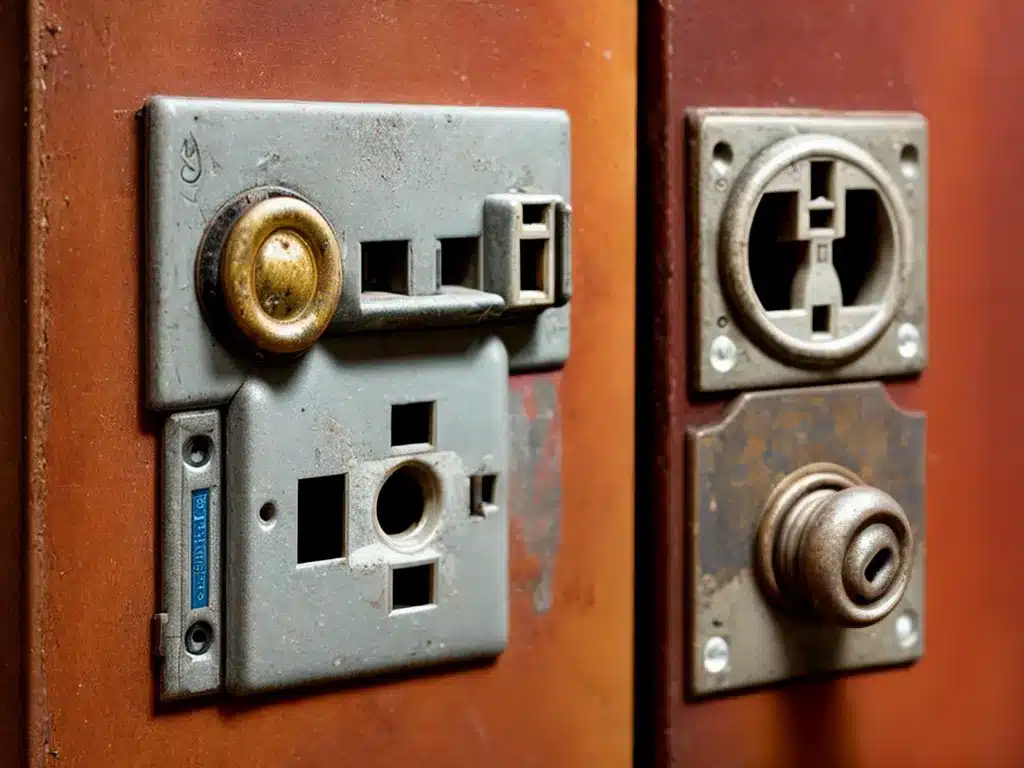 Use Antique Electrical Sockets Without a CE Mark” />
Use Antique Electrical Sockets Without a CE Mark” />
Introduction
Using antique electrical sockets without modern safety features like a CE mark can be risky. However, with some basic safety understanding and precautions, these charming old sockets can be used safely in your home. In this comprehensive guide, I will cover everything you need to know about using antique electrical sockets safely.
Assessing Antique Socket Safety
Before using an antique electrical socket, it is crucial to carefully assess its safety. Look for:
Materials
-
Porcelain – Antique sockets made of porcelain are generally safe, as porcelain is an insulator that does not conduct electricity. Porcelain withstands heat and is unlikely to crack or warp.
-
Bakelite – This early plastic material is prone to cracking over time, creating potential shock and fire hazards. Avoid using damaged Bakelite sockets.
-
Metal – Antique metal sockets can be unsafe if insulation breaks down or components warp. Carefully inspect condition before use.
Wiring
-
Check wiring for cracking, fraying, or exposed copper. Damaged wiring can cause shorts, shocks, and fires. Rewire antique sockets if wiring is compromised.
-
Wiring should be properly insulated with rubber or woven fabric, not just wrapped in cloth or paper. Insufficient insulation poses serious risks.
Connections
-
Inspect socket screws, contacts, and terminals for wear, corrosion, and looseness. Improper connections can spark, overheat, and cause shocks.
-
Check for signs of amateur DIY repairs, as these are often unsafe. Only use sockets repaired by an electrician.
Grounding
- Antique sockets likely have no grounding pin or connection to ground. This makes them prone to short circuits and shocks. Use a GFCI outlet or extension cord for protection.
Age and Wear
Very old sockets from the 19th/early 20th century are more likely to have safety issues from degradation over time. Use newer antique sockets from the 1930s-1950s if possible. Check thoroughly for cracks and damage.
Safety Modifications
To improve safety, consider these modifications to antique sockets by a licensed electrician:
-
Rewiring – Replace old degraded wiring with new wiring that meets modern safety codes. Use materials like rubberized cloth insulation.
-
GFCI – Install a GFCI outlet or extension cord to protect against faults causing shocks. This compensates for lack of grounding.
-
Insulation – Upgrade insulation around terminals and connections to prevent sparks and shocks.
-
Reinforce – Repair any cracks or damage points that weaken the socket. Reinforce mounting plates and hardware.
-
Clean Contacts – Carefully clean contact points and terminals to improve conductivity and prevent resistance heating risks.
Safe Usage Tips
When using antique sockets, take these precautions:
-
Use GFCI protection via outlet or extension cord. Never plug an antique socket directly into the wall.
-
Only use low wattage devices, ideally 25 watts or less. Avoid high draw appliances that could overload the socket.
-
Frequently check for overheating of the outlet during use. Unplug immediately if you notice any heat buildup.
-
Do not plug adaptors or power strips into antique sockets. Only use one device at a time.
-
Avoid using antique sockets in damp areas like basements and garages. Moisture increases risk of shorts.
-
Check antique sockets for dust buildup and clean gently with a dry cloth. Dust can hold moisture against contacts.
-
Turn power off via the fuse box when changing bulbs or adjusting devices in an antique socket.
-
Consider additional isolating devices like an isolation transformer to limit power surges.
When to Replace an Antique Socket
If an antique socket shows any of the following, stop using it immediately and replace it:
- Cracked, warped, or damaged socket materials
- Exposed contacts or wire leads
- Signs of amateur repairs
- Melted or scorched areas
- Frequently tripped GFCI protection
- Overheating during normal use
- Frequently blown fuses when socket is used
- Signs of short circuit like flickering lights
- Loose mounting plate or box
Replacement requires safely disconnecting and removing the old socket, then installing a new UL-listed socket. Hire a licensed electrician rather than doing DIY electrical work.
Conclusion
With proper maintenance and safety precautions, antique electrical sockets can be used in modern homes to provide charming vintage style. Carefully inspect sockets, make any needed repairs, use GFCI protection, avoid high powered devices, and frequently monitor sockets during use. Replace immediately at any sign of problems. With common sense and caution, antique sockets can be safely enjoyed. Just be sure to put safety first.
